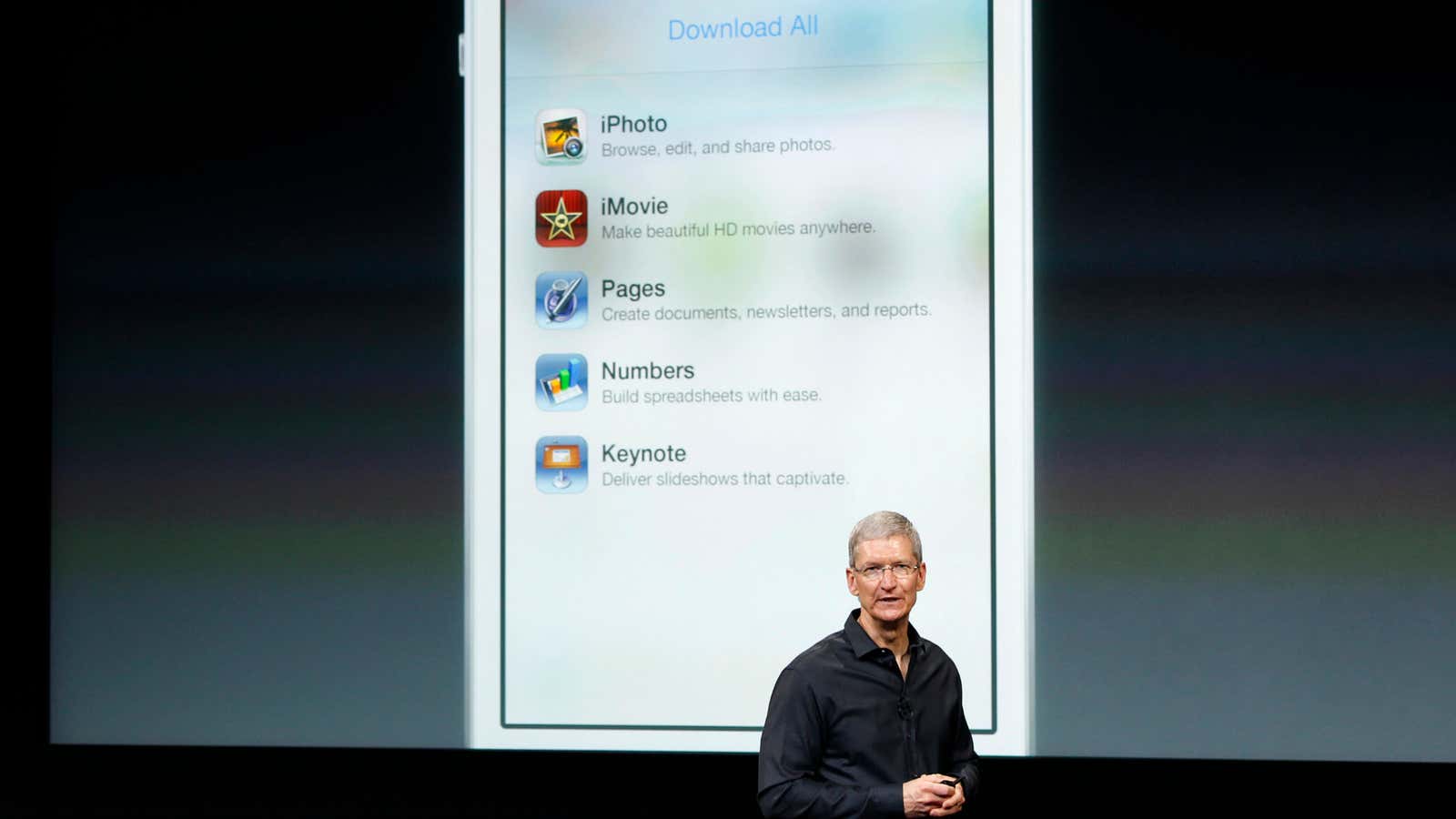Tim Cook laid a little-remarked bombshell on Microsoft at Apple’s event today.
Apple’s CEO announced that iWork, the company’s suite of productivity software (word-processing, spreadsheets, presentations) “now consists of the best-selling mobile productivity apps on any platform.” That’s not so remarkable: Microsoft has allowed its Office suite, which is near-ubiquitous on PCs, to fall far behind on mobile by not releasing versions of it for iOS and Android devices until this summer. But then Cook revealed that from now on, anyone who buys a new iPhone or iPad will get iWork for free. It used to cost $30 in the United States.
On the surface, this might seem simply like a ploy to get people to buy more iDevices. And in part it is: Apple makes the vast majority of its money from hardware, not software. But it also looks like part of a wider plan to challenge Microsoft Office head-on.
Up to now, Office’s strength has been its ubiquity. It has long been available on Macs as well as Windows machines. But this summer, Apple finally brought iWork to Windows, in a sense, by launching a beta version of iWork in the cloud. Any PC user can run it, for free, through a web browser. As 9to5mac pointed out at the time, this suggested that Apple might soon cut the price of iWork in its other incarnations to zero, because charging for it while offering a free version through the web made no sense.
So now that this price cut has happened, Apple suddenly has a powerful competitor to Office that works on Apple mobile devices as well as on all desktop computers. But, unlike Office, iWork is, or could soon be, free on all of them. (Apple still charges a total of $60 for the Mac versions of its iWork suite, but those may be the next to go free once the web version goes mainstream.) Microsoft, meanwhile, still charges roughly $140 for a basic install of Office on a PC, and $100 for a year of Office 365, the cloud-based version, which you need in order to use it on mobile devices.
Aside from iWork, the other productivity suite that is both widespread and free is Google’s cloud-based software, Google Drive. Drive has one signal advantage over iWork: It also functions on tablets and phones running Google’s Android operating system. With people spending more and more of their computing time on tablets and phones, this is an important strength.
But that probably doesn’t matter to Apple. Its end goal still isn’t to beat Google for market share in software, but to sell as many pieces of lucrative hardware as possible. In this sense, iWork now serves a very similar purpose to iTunes: It’s a bridge between Apple mobile devices and non-Apple PCs, making it easier for those who aren’t diehard Apple fanatics to buy one or two of the company’s toys. But the development might also make more Office users wonder whether they really need to keep shelling out for a word processor.
